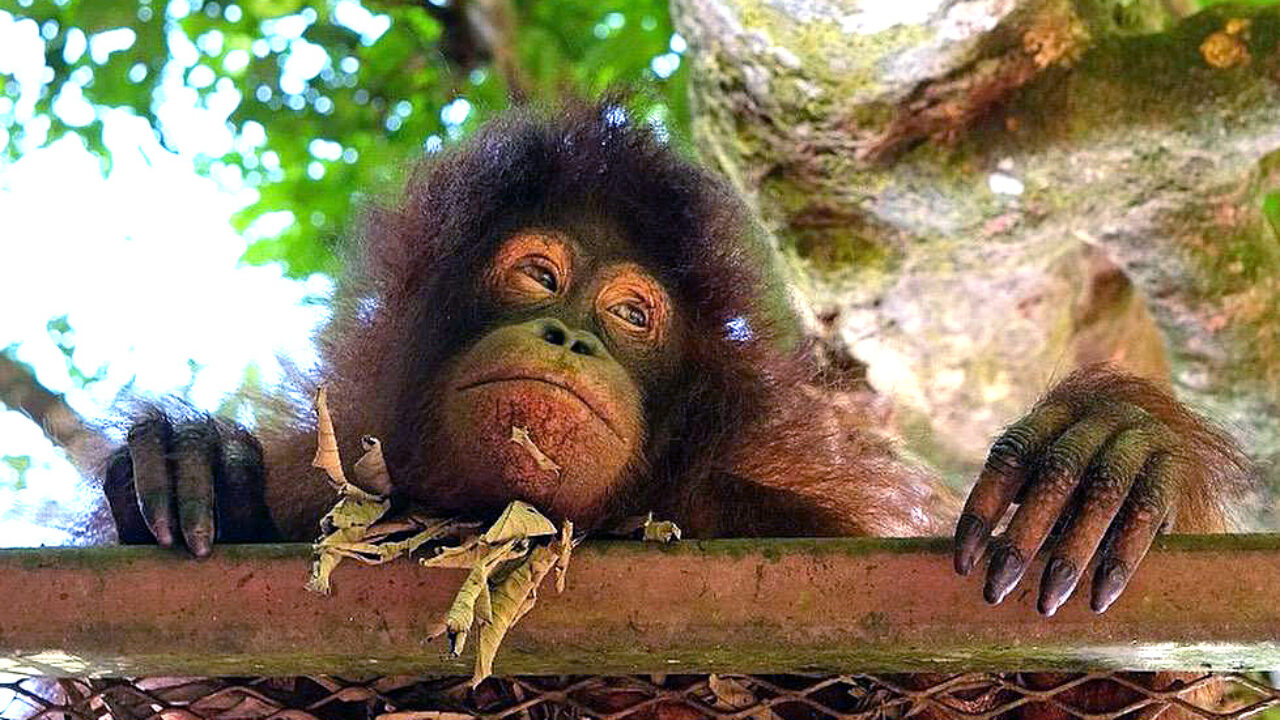
For beauty lovers conscious of their impact on the world around them, there are plenty of options to choose from. You can switch to a solid shampoo bar, a refillable deodorant and only buy vegan and cruelty-free products, but there’s a major ingredient found in a huge swathe of products that is damaging to the environment in a way you may never have considered – palm oil.
But what is palm oil used for, and why is palm oil bad for you?
If you’ve heard of it, you’re probably aware it’s not a good thing. There was an incredibly moving advert put out by Iceland Foods in 2018 encouraging people to boycott products that contain the oil for Christmas.
This isn’t altogether necessary. Plus palm oil is used to produce so many derivative ingredients it might be impossible to remove it from your beauty routine.
We’re not here to preach; to tell you whether to avoid it or not, but we do want to provide you with information about what it is, why it’s causing environmental issues and how you can find out more about what goes into the beauty products you use.
FURTHER READING: Clean beauty: What are clean beauty products and how can I shop more consciously?
Palm oil is a type of vegetable oil like sunflower, rapeseed or olive oil found in your kitchen cupboard.
The two types of palm oil both come from the oil palm plant; one made from squeezing the fruit (called crude palm oil) and another from crushing the stones (palm kernel oil). But the major difference between palm oil and other vegetable oils is that palm oil is cheap, and it’s everywhere.
It is found in all sorts of foods, in almost half of the products in a supermarket, but it’s also an ingredient in many kinds of beauty products including lipstick, deodorant, toothpaste and shampoo.
The reason you’ll find it in so many beauty products is for its moisturising properties. Yet it also provides the products you use with the right kind of texture we’ve become accustomed to, while helping to extend the shelf life of products.
Derivatives, like sodium lauryl sulphate (SLS), also help certain products, like shampoos, to foam, for instance. SLS on its own is considered a no-go by experts, and you can read more about that in our guide to Why sodium lauryl sulfate found in high-street shampoos is being shunned by experts.
The oil palm tree is native to Africa, but around 100 years ago the trees were brought to south-east Asia.
Today, 85% of the world’s supply comes from Indonesia and Malaysia, where production has been responsible for the destruction and devastation of rainforests.
Among palm oil plantations’ biggest victims are orangutans, with more than 50,000 of the animals having died because of the removal of their habitat. Rhinos, elephants and tigers are also affected by the removal of the rainforests.
There is a climate change problem, too.
The naturally moist peat soils on which rainforests grow can contain 18 to 28 times the amount of carbon in the forests themselves. These are drained to make better conditions for the oil palms.
Then, huge amounts of carbon dioxide are released during forest fires used to clear the land, burning the trees and the peat, ready for oil palms to grow.
In 1997, fires burning peat and vegetation in Indonesia released as much carbon into the atmosphere as the United States released that whole year.
This is why, in 2018, the oil was brought to the public’s conscience when Iceland banned the ingredient from any of its products. The supermarket announced the policy with an emotional Christmas advert made by Greenpeace.
It is by no means the only source of oil or food that causes deforestation, though.
The World Resources Institute estimates seven commodities drive 58% of the world’s tropical deforestation: palm oil, beef, soy, wood fibre (for paper and pulp), cocoa, coffee and rubber.
Out of these, beef cattle take up the most space, occupying 63% of the total deforested land (45 million hectares of land between 2001 and 2015). After beef, palm oil was the second most destructive commodity to tropical forests, taking up 10.5 million hectares of deforested land.
It’s potentially harmful to boycott palm oil altogether. Compared to other vegetable oils, palm oil is the best in terms of the amount of oil produced per unit of land, while requiring fewer fertilisers and pesticides.
If we were to completely replace palm oil with alternatives, we’d need more land.
In your daily life, your beauty routine is unlikely to be your biggest use of the oil. Only two per cent of global palm oil and palm kernel oil is used in cosmetics.
HOW TO SPOT PRODUCTS
If you want to avoid palm oil products, you can look for the ingredient Elaeis Guineensis Oil.
However, if this is missing it doesn’t necessarily mean there is no oil in the product.
There are lots of other ingredients that are potentially derivatives like SLS, lauryl betaine, cetearyl alcohol and glycol cetearate.
Many beauty companies, like The Body Shop, L’Oreal, Neal’s Yard, Weleda, Lush and Nivea have signed up to the Roundtable on Sustainable Palm Oil (RSPO) standards for all the palm oil used in their products.
While they are not perfect, and the guidelines have come under criticism for not being stringent enough, adhering to the RSPO standards is a sign the company is taking its responsibility to the environment seriously.
“We encourage companies to be transparent in their use and sourcing of palm oil ensuring they know who they are buying from and where it’s been produced,” says the WWF.
Companies respond to public pressure, so if you’re passionate about the contents of your favourite beauty products and how they are sourced, you can always write to the company to ask if they use palm oil-derived ingredients and, if so, how they are sourced.
You can also use the CodeCheck app.
By scanning a product’s barcode, the flags up any potential ingredients that you may want to steer clear of.
Additionally, you can browse its database of products before you buy an item to check its rating.
Each one is shown with an at-a-glance chart within the search results that show the number of safe or standard ingredients (represented in green) and the number of ingredients that you may not want to use (represented in red).
For each product, the app recommends a safer, cleaner, or more conscious alternative. You can read more about CodeCheck and clean beauty in our guide.
Axiology prides itself on being sustainable and creating the “most ethical lipstick on the planet”.
As well as being free from the oil, Axiology’s products are vegan, never tested on animals and the packaging is made from recycled waste paper.
As well as lipsticks, the brand sells ‘Balmies’, sticks you can use as a lip, eye or cheek colour.
FURTHER READING: Best sustainable beauty brands UK: Our pick of eco-friendly makeup and skincare brands and their must-have products
At £47, this is not cheap, but everything in the Previse skincare range is free from oil as well as being vegan.
This cleanser contains marine algae, which gently exfoliates the skin.
The brand also guarantees workers are paid a living wage and no child labour or human trafficking is involved in the entire supply chain.
FURTHER READING: Best cleanser: Discover which face cleanser best suits your skin from oily to dry and acne-prone
In 2006, Lush removed palm oil from all its soap bases by creating a blend of rapeseed oil and coconut oil, which is used as the base of most of Lush’s soaps today.
However, the company was not certain other ingredients it used, like sodium lauryl sulphate used to make soaps foamy, were not derived from it.
So in 2017, the company created Movis, which is made from sunflower oil, organic cocoa butter, extra virgin coconut oil and wheatgerm.
Now everything in the company’s Gourmet Soap range is palm oil-free.
FURTHER READING: Skincare makeup: The best beauty products that are good for your complexion while saving you time and money
 mamabella | mamabella
mamabella | mamabella Again, everything by Fat & The Moon is palm oil-free, as well as containing natural ingredients and plastic-free packaging.
The brand’s aloe vera lotion is designed to soothe skin, particularly when it’s been sunburnt.
It contains coconut oil, sunflower oil and beeswax. The brand also sells cream deodorants, highlighters, lip paints and eye ‘coal’ which can be used as eyeshadow or eyeliner.

Abigail is a leading science journalist writing about space, sustainability, technology and culture. She is author of The Art of Urban Astronomy, a must-have guide to the night sky that guides you through the seasons and learn about the brightest stars and constellations, the myths and legends of astronomy and how to identify star clusters and galaxies.
